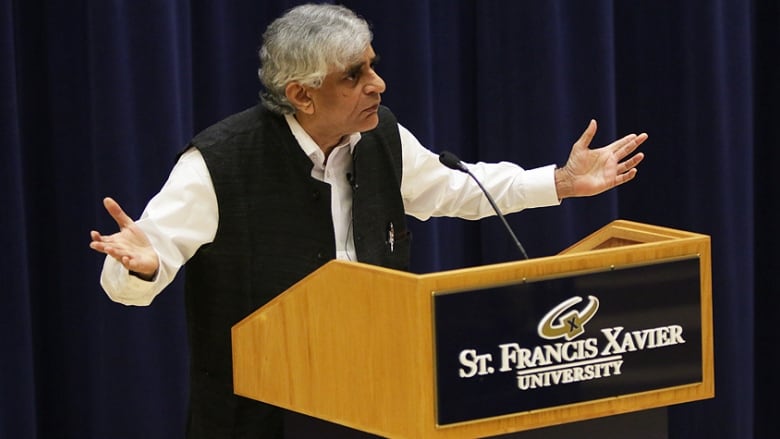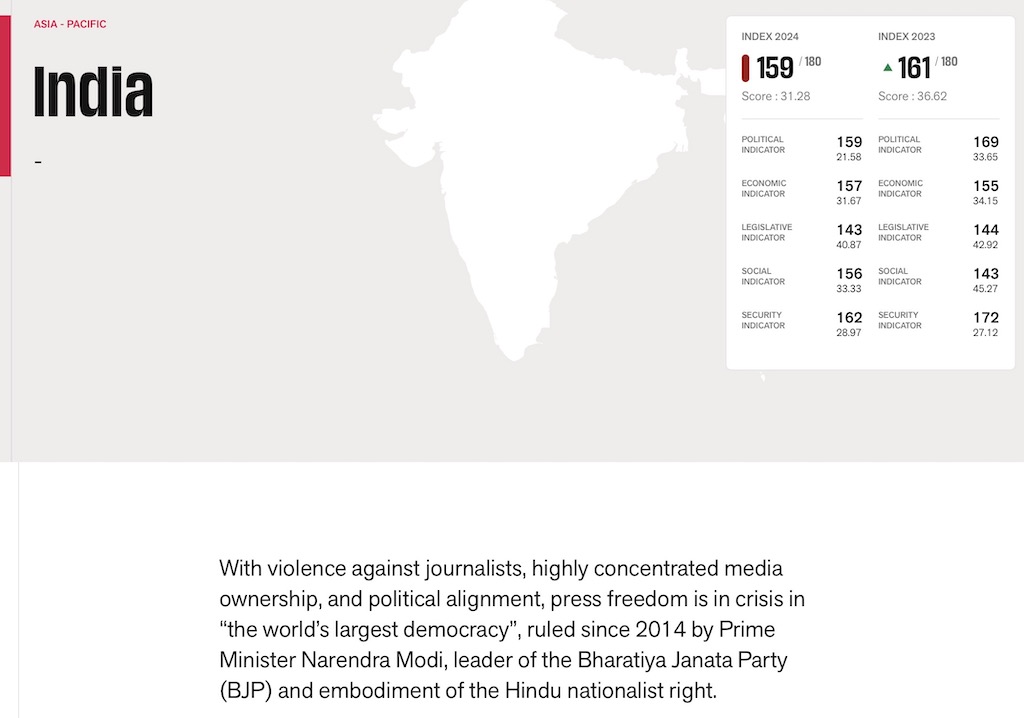Note: for official figures include “scheduled tribe ST” along with a union state or region, e.g. “Chhattisgarh ST community”, “Scheduled tribe Tamil Nadu census”, “ST Kerala census”, “Particularly Vulnerable Tribal Group Jharkhand”, “PVTG Rajasthan”, “Adivasi ST Kerala”, “Adibasi ST West Bengal” etc.
List of Indian periodicals and sites covered by the present Custom search engine
www.timesofindia.indiatimes.com
Suggest another Indian periodical for inclusion here >>
Note: hyperlinks and quotes are meant for fact-checking and information purposes only | Disclaimer >>

Saint Francis Xavier University’s Coady Chair in Social Justice for 2015 >>
Touring ten drought-stricken states in India transformed the acclaimed journalist Palagummi Sainath – showing him a devastating situation mostly ignored by his fellow journalists. “I felt that if the Indian Press was covering the top 5 percent, I should cover the bottom percent.” He also believes the media around the world is, for the most part, imprisoned by profiteering and political constraints. A conversation with Saint Francis Xavier University’s Coady Chair in Social Justice for 2015, along with excerpts from Palagummi Sainath’s lecture, Media and Democracy. **This episode originally aired May 27, 2016.
Source: Imprisoned by Profit: Media & Democracy
URL: https://www.cbc.ca/radio/ideas/imprisoned-by-profit-media-democracy-1.3601228
Date visited: 26 March 2020

With an average of three or four journalists killed in connection with their work every year, India is one of the world’s most dangerous countries for the media. Journalists who are critical of the government are routinely subjected to online harassment, intimidation, threats and physical attacks, as well as criminal prosecutions and arbitrary arrests. They can be victims of violence, from police officers and political activists, as well as criminal groups and corrupt local officials. Proponents of Hindutva, the ideology of the Hindu far right, call for popular revenge against critics branded as “traitors” and “anti-national”. Terrifying coordinated campaigns of hatred and calls for murder are conducted on social media, campaigns especially violent when they target women journalists, whose personal data is divulged. The situation is also remains very worrisome in Kashmir, where reporters are often harassed by police and paramilitaries, with some being subjected to so-called “provisional” detention for several years.
“India Index” (2023 & 2024) by Reporters Without Borders (RSF)
URL: https://rsf.org/en/country/india
Date Visited: 3 May 2024
“The report titled, Who Tells Our Stories Matters: Representation of Marginalised Caste Groups in Indian Newsrooms, was released on 2 August. It studied the representation of people from different caste groups in the Indian media to document ‘who has a seat at the table and whose voice has a chance of being heard.’ It found that the ‘Scheduled Tribes are almost entirely absent, whereas the Scheduled Castes are represented mostly by social activists and politicians rather than journalists. English newspapers are worse than Hindi on representing Dalit, Adivasi writers.” – The Caravan, 3 August 2019 >>
Poor implementation of existing schemes in the tribal regions has meant that not only poverty continues at an exceptionally high levels in these regions, but the decline in poverty has been much slower here than in the entire country, as shown in this table (for the years 1993-94, 1999-2000 and 2004-05).
Source : “Rural Population Living Below Poverty Line (In Percent), Planning Commission, Twelfth Five Year Plan Document” by Dr. Ashok A. Sonkusare, Joint Adviser (S&T), NITI Aayog/Planning Commission
URL: https://data.gov.in/resources/rural-population-living-below-poverty-line-percent
Date visited: 16 April 2020
Learn more
Accountability | Constitution and Supreme Court | Democracy
Adivasi (Adibasi) | Scheduled Tribes (ST) | Classifications in different states | Tribal Research Institutes
Adverse inclusion | Casteism | Imprisonment | Social conventions
Ambedkar | He who does not lead his life under the direction of others … is a free man
Anthropology | Anthropological Survey of India (AnSI)
Biodiversity | Hyderabad biodiversity pledge
Childhood | Childrens rights: UNICEF India | Safe search
Climate change | United Nations on climate change
Colonial policies | Denotified Tribe vs. “criminal tribe“
eBook | Background guide for education
eBook | Demographic Status of Scheduled Tribe Population of India (Census figures 2011)
Ekalavya and Drona shape collective expectations from a teacher and a student
Fact checking | Figures, census and other statistics
Health and nutrition | Recommendations by the Expert Committee
How many ‘Scheduled Tribes’ are there in India? | Latest list (ST): tribal.nic.in (Govt. of India)
Human Rights Commission (posts) | www.nhrc.nic.in (Government of India)
National Commission for Scheduled Tribes
News update in Indian periodicals: Tribal Affairs
Nomadic and Semi-Nomadic Tribes | SEED – Government scheme